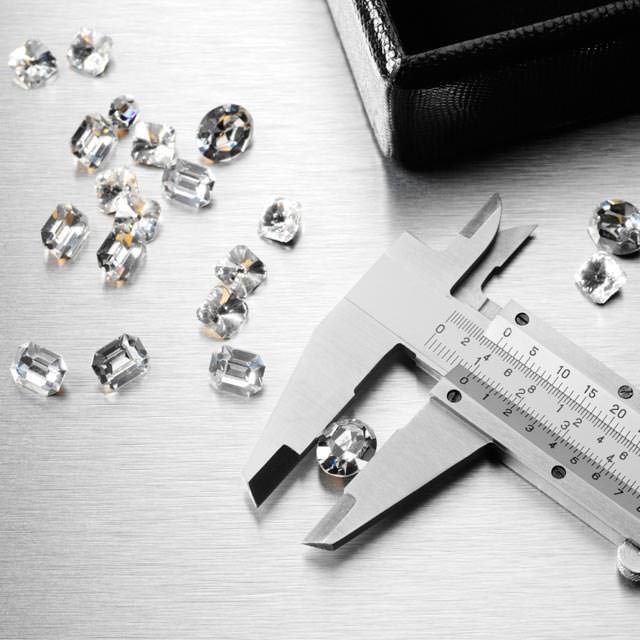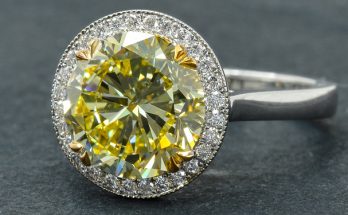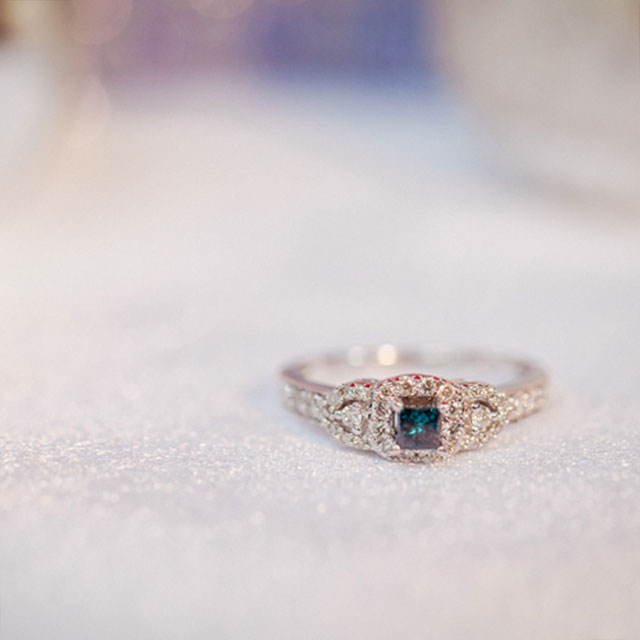Get insight into what the 4Cs really mean — and know where you can give a little and still get a beautiful diamond.
In the same way that you check the Blue Book value of a car before you buy it or the Zagat rating of a high-end restaurant before you book a reservation, you can compare the quality and value of diamonds based on their grade.
That grade is made up of four factors, often known as the 4Cs: cut, clarity, color and carat weight. Each “C” has its own grading scale for evaluating quality. Put together, the diamond 4Cs help diamond sellers determine price and compare diamonds to one another. They’re also a useful tool for shoppers — and the more you understand about them, the savvier you’ll be in choosing your diamond.
Why the 4Cs matter
When the diamond 4Cs were introduced in the mid-20th century, for the first time ever the world had a universal standard for judging the quality of a diamond and a transparent way of determining its value. The 4Cs also became a tool for people to understand why they might want to buy one diamond over another, when it was often hard to discern differences between two different diamonds with the naked eye.
The diamond 4Cs are still as important today as they’ve always been. However, a renewed emphasis on one of the Cs (cut) can help a diamond shine more brilliantly. Knowing this means you as a shopper can prioritize some Cs over others to find a diamond that works within your budget.
Navigating the Cs
When you shop for a diamond, you may see a string of letters and numbers that indicate the diamond’s grade. It might look something like this: 1 ct E VS1. Diamond experts will tell you that’s a very nice diamond — and probably a quite expensive one.
Let’s demystify the 4Cs and the way diamonds are graded.
Carat: the heavy on diamond weight
People often mistake carats as a measurement of size, but they actually measure weight. Diamonds are also measured in points: 100 points equals 1 carat. The abbreviation “ctw” standards for “carat total weight,” which measures the total weight of all diamonds in a piece of jewelry.
Very small differences in carat weight can sometimes result in a disproportionate spread in cost. To the eye, the difference between a 1.1-carat and 1.2-carat diamond (1 1/10 carat and 1 1/5 carat diamond) might be impossible to discern, but the cost difference between those carat weights can be thousands of dollars for otherwise identical diamonds.
If shaving off cost on a diamond, start by looking at a diamond 10 or 15 points less than a diamond you like. For example, if you love a 1.20-carat (1 1/5 carat) diamond, see what it looks like next to a 1.10-carat (1 1/10 carat) diamond of the same quality — it’s likely you’ll have difficulty seeing a big difference, but you may save hundreds of dollars.
Color: white is right
Diamonds come out of the earth in many different colors. The market has traditionally valued white diamonds higher than others, and the grading scale reflects that. The D grade, at the top of the scale, is considered “colorless,” rarest and most expensive. Going down the 23-grade scale from D to Z, diamonds become progressively more yellow, brown or gray.
Most diamonds sold for jewelry today are considered “near colorless” — between G and J on the color scale. At a J grade and beyond, the human eye can start to detect a yellow tint.
A D-color diamond is a rare specimen — and it costs a pretty penny. Moving down the color scale toward H or I lets you buy a diamond that still appears white, but is more common and thus more affordable.
One thing to note: color diamonds have become more valuable as they’ve become more fashionable, and “fancy” colors, when they occur naturally, are rare and expensive. (Diamond color treatments can help you get these coveted colors for less.)
Clarity: natural flaws
The clarity grade is a reminder that, after all, a diamond is a thing of nature — and like most natural things, it’s rarely perfect. Like any rock or mineral, diamonds often have flaws, known as inclusions and blemishes. Diamond cutters try to cut and polish a diamond to hide these inclusions or work around them, but they’re still there — and the clarity grade measures them. The scale ranges from flawless to heavily included:
- F (flawless inside and out)
- IF (internally flawless, which means there are blemishes on the surface but not inside the diamond)
- VVS1 and VVS2 (very, very slightly included – two levels)
- VS1 and VS2 (very slightly included – two levels)
- SI1 and SI2 (slightly included – two levels)
- I1, I2 and I3 (included – three levels)
It may be difficult to see inclusions with the naked eye unless you look closely, depending on where they are located within the diamond. But every diamond is different, so you have to look for yourself. If you look at an SI2 diamond and personally can’t see the inclusions without a jeweler’s loupe, you can probably accept a lower grade and save on cost without compromising beauty.
Cut: bringing out the beauty
A diamond’s cut is harder to quantify than color, clarity and carat weight. That’s because cuts can vary from diamond to diamond and have to do with how the diamond cutter chooses to shape, facet and polish a diamond. Sometimes diamonds are cut so they’re heavier, thus fetching more value for their carat weight; sometimes they’re cut to hide or minimize inclusions.
But many diamond companies are focused on cutting diamonds for beauty. A diamond is essentially a prism of light, and diamond cutters work to let the most light shine through each stone. When done well, a diamond’s cut can be the most important C. When grading the cut of a diamond, laboratories evaluate the diamond’s:
Brightness:
The light that reflects from the diamond.
Fire:
How the light scatters through the diamond to create a rainbow of light, like a prism.
Scintillation:
The amount of intense sparkle or flashes that occur across the surface of the diamond as it moves under light.
Diamond cuts are often evaluated as:
- Ideal or near ideal (meaning that the angles and proportions of the diamond have been cut to produce the ultimate brightness, fire and scintillation)
- Excellent
- Very good
- Good
- Fair
- Poor
Making the Cs work for you
Now that you understand the diamond 4Cs, you can use them to your advantage. As you are comparing diamonds and trying to work within your budget, consider how you might:
- Get a beautiful, sparkling diamond by focusing on cut while sliding down the scale a few levels on color and clarity.
- Get a larger diamond but scale back a fraction of a carat (10-20 points) to save money.
- Buy a lower-weight diamond but a near-ideal or ideal cut, focusing on the diamond’s radiance and beauty and putting less emphasis on the size.
The 4Cs will reassure you that you’re buying a quality diamond and getting what you pay for, but remember that they’re really just a tool. Rather than bragging about her “1-ct. E VS1” diamond, your fiancée will exclaim, “Look at my beautiful diamond engagement ring!” And that’s ultimately what matters most.



